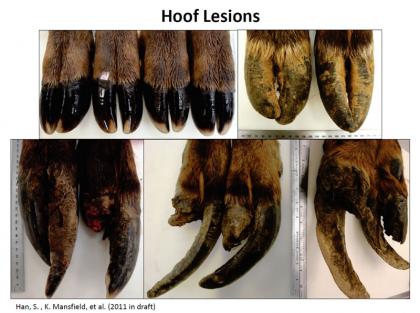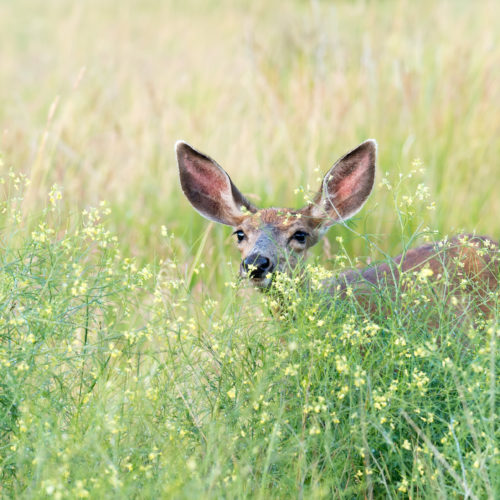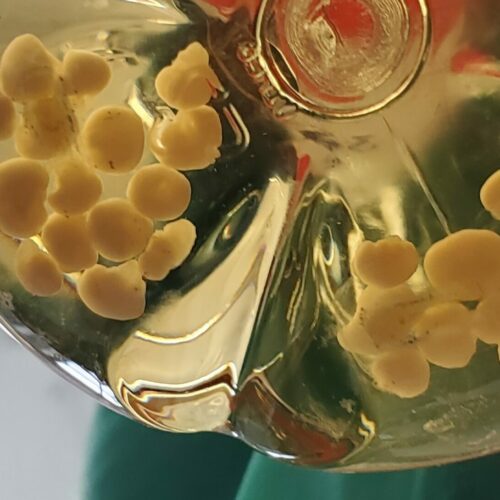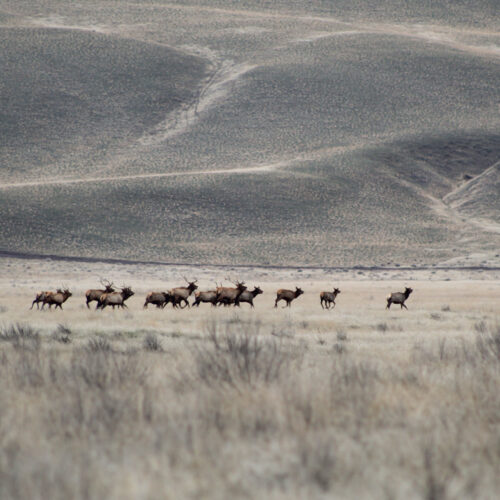
Unlocking An Elk Hoof Disease Mystery
Listen
BY RACHEL SUN
For over a decade, a mysterious disease first observed in Southwest Washington has affected wild elk populations in the Northwest, causing their hooves to develop lesions and sometimes slough off entirely. Until recently, scientists didn’t know how elk hoof disease spread, or how to stop it. But new research from Washington State University may change that.
The research by Margaret Wild, head of WSU’a Elk Hoof Disease Research program, and master’s graduate student Zach Robinson, shows that elk can develop the disease from contact with infected hoof material. Knowing that is a big first step in stopping its spread, Wild said.
“The first thing you need to understand, when animals have lesions is, ‘is it an infectious and transmissible disease, so one that one animal can give to another animal? Or is it something, say, in the environment, like a toxin, or nutritional issue?’” Wild said. “In which case, that animal has the disease, and it’s not going to continue to pass the disease on to others.”
Knowing elk hoof disease spreads through infected material means wildlife managers will have a better idea of how to treat — and how not to treat — the disease. Currently, veterinary treatments aren’t realistic for a large wildlife population.
“I so wish, and I know so many other people wish we could develop [a veterinary treatment],” Wild said. “An antibiotic or a vaccine or a foot bath. Those just aren’t feasible. Even with a similar disease that occurs in domestic livestock. Those dairies are infected for long periods of time, even when you’re trying to treat the disease intensively like you can with cattle.”
What is possible is the selective removal of infected individuals, and limiting elk access to areas where high levels of infection have been observed. Cutting off access to those points until the disease-causing organisms are no longer present in the soil could be an option to combat the disease.
Educating hunters on how to properly dispose of infected hooves might also lessen the risk of transmission to healthy animals, as some hunters leave hooves in the field.
To conduct the research, Wild and Robinson kept six young elk in individual pens filled with soil collected from the Mount St. Helens region to simulate a natural environment.
They then introduced a mixture containing minced pieces of infected hooves to four of the six pens, keeping two elk untreated as the control group. A teaspoon of the material was also placed between the four elks’ hooves and secured with bandages to ensure contact.
Within two to three months, Wild and Robinson observed lesions developing on the hooves of all four exposed elk. By four months, all exposed elk had a moderate grade infection.
Throughout that process, Wild says the elk were treated with pain medication to alleviate discomfort and humanely euthanized before that pain becomes too difficult to manage.
The state and the university itself both have guidelines for “humane endpoints” for research animals, said Charlie Powell, public information officer for WSU’s College of Veterinary Medicine, and the animals are closely monitored by the graduate students who care for them.
“I would say the biggest regulation comes from the consciousness of the researchers and their ethics,” he said. “They don’t like seeing these animals suffer and they don’t want this to go on any longer than possible. And they want these animals to live an ideal life during the time that they are with us.”
More research is still necessary, Wild said, including work to see if the results can be replicated consistently, whether the disease will spread to other animals like deer, whether environmental factors like diet affect susceptibility to elk hoof disease and further study of the bacteria that cause it.
Related Stories:

Fatal deer disease found in Washington for the first time
Mule deer in tall grasses and forbs, Iwetemlaykin Heritage Site, Wallowa Valley, Oregon. (Credit: Leon Werdinger / Alamy Stock Photo) watch Listen (Runtime 0:59) Read A fatal disease for deer

High steaks plate: Chronic wasting disease transmissibility to humans
Mule deer in tall grasses and forbs, Iwetemlaykin Heritage Site, Wallowa Valley, Oregon. Listen (Runtime 4:46) Read Chris Rau — a home chef, hunter, and student in the College of

A return after seven decades: Inside the Yakama Nation’s elk hunt on the Hanford Reach
A group of elk runs from Yakama Nation hunters on the Hanford Reach National Monument in December 2023. (Credit: Star Diavolikis / Yakama Nation) Listen (Runtime 3:50) Read A video















